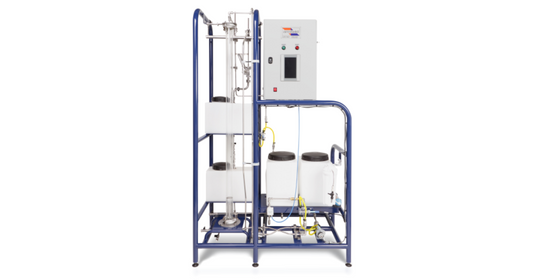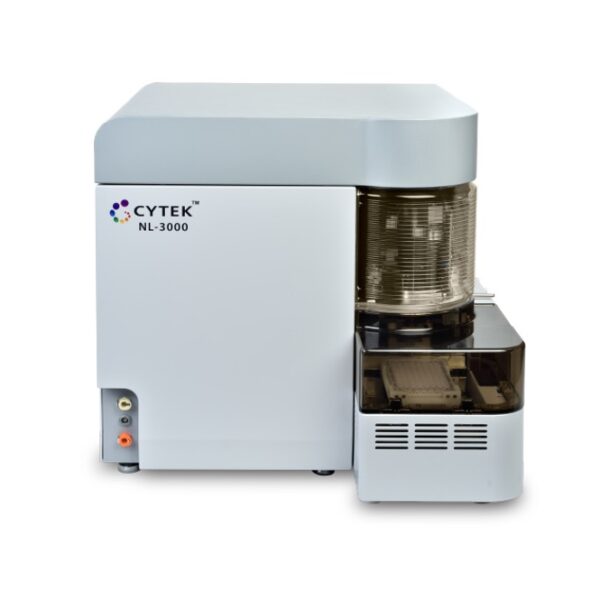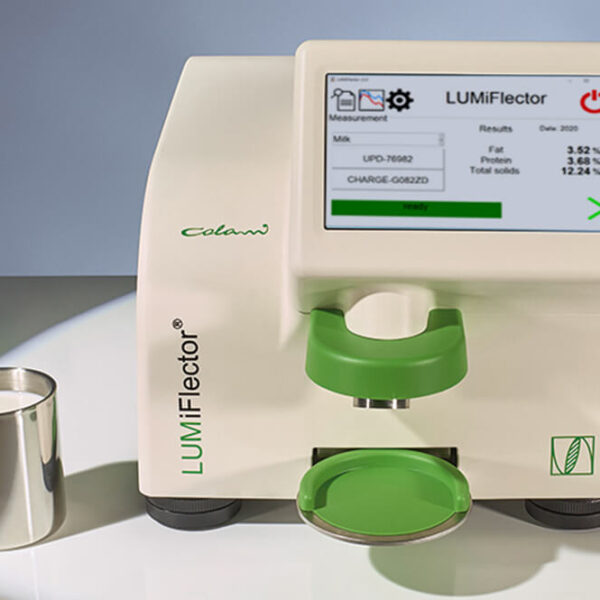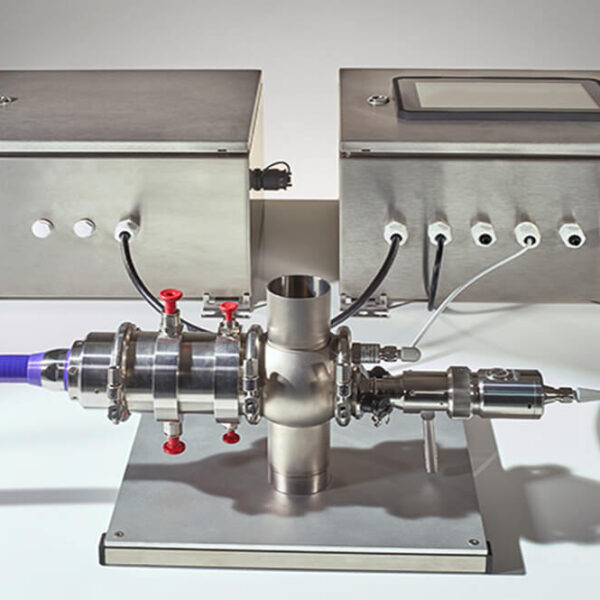Armfield – Unit Operations – UOP Series
-
MALAYSIA
Jasmine Keller, Assistant General Manager, Scientific Solutions
DKSH Technology Sdn. Bhd.
B-11-01, The Ascent, Paradigm, No. 1, Jalan SS7/26A, Kelana Jaya
47301 Petaling Jaya, Selangor
Malaysia
-
SINGAPORE
Monica Wan, General Manager
DKSH Singapore Pte Ltd
625 Lorong 4 Toa Payoh, #03-00
319519 Singapore
Singapore+65 6962 3121
+65 6273 1503
-
VIETNAM
Nguyen Thi Xuan Mai, Senior Manager, National Sales
DKSH Technology
5th Floor, Viettel Complex, 285 Cach Mang Thang Tam Ward 12,
District 10/6th Floor, Peakview Tower,
36 Hoang Cau O Cho Dua Ward
70000 Ho Chi Minh City / Dong Da District, Ha Noi
Vietnam+84 28 3812 5806 ext 89604
+84 8 3812 5807
Available Models
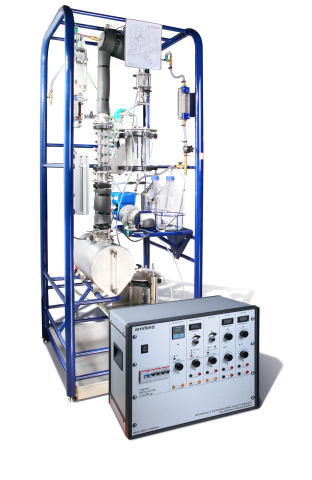
The UOP3 laboratory-based distillation columns allow safe hands-on practical training for student engineers and plant operators. Available as either a continuous distillation column or a batch-only version for teaching the fundamentals.
Key Features
UOP3CC Batch Distillation Column – under manual control
- Self-contained sieve plate distillation column unit including reboiler, condenser and reflux tank, suitable for use with flammable solvents and fully instrumented for batch operation
- Eight feed and sample points
- Temperatures throughout the process including those on each and every sieve plate are monitored and displayed on a bench-mounted control console, via a selector switch. The console also houses controls for the power supplied to the reboiler heater and for reflux ratio settings from 0-100%
- The console front panel connections enable the use of standard laboratory recorders and data loggers and of industry-standard PID and PLC controllers (not supplied)
- A U-tube manometer is incorporated to measure pressure drop over the distillation column
- The 50mm diameter sieve plate column may be readily interchanged with a packed column supplied as an alternative
- A vacuum system enables operation at reduced pressures down to 200mbar
- The unit is supplied fully assembled including lagging, and a comprehensive instruction manual describes commissioning, maintenance and instructional assignments
UOP3CC Computer-interfaced Distillation Column
- Self-contained sieve plate distillation column unit including feed vessels and pump, reboiler, condenser, reflux separator, product collecting tanks, bottoms product cooler/feed preheater, suitable for use with flammable solvents and fully instrumented for both batch and continuous operation
- Eight feed and sample points
- Temperatures throughout the process including those on each and every sieve plate are monitored and displayed on a bench mounted control console, via a selector switch. The console also houses controls for the power supplied to the reboiler heater and for reflux ratio settings from 0-100%
- The console front panel connections enable the use of standard laboratory recorders and data loggers and of industry-standard PID and PLC controllers (not supplied)
- The console is designed to be connected to a PC (not supplied), and software is provided to enable data logging, real-time trend monitoring and PID control loops to be set up, monitored and configured by the user via a mimic diagram
- A U-tube manometer is incorporated to measure pressure drop over the distillation column
- A vacuum system enables operation at reduced pressures down to 200mbar
- A third feed vessel is supplied, so with the reflux phase separator, azeotropic distillation may be demonstrated
- The 50mm diameter sieve plate column may be readily interchanged with a packed column supplied as an alternative
- The unit is supplied fully assembled including lagging, and a comprehensive instruction manual describes commissioning, maintenance and instructional assignments
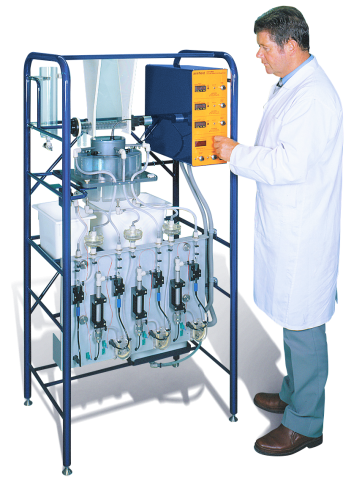
The UOP4-MkII is a laboratory-scale solid/liquid extractor system for teaching the fundamentals of this important unit operation to chemical-engineering students. The equipment utilises a sophisticated, continuous feed, counter-current flow, multiple-stage, rotary extractor system of the type frequently seen in industrial applications.
Key Features
- A continuous three-stage solid/liquid extraction system using the rotary extraction cell design. The rotacell rotation speed is variable (0-4 revs/hr)
- Delivery of feed material is automated and feed rate is variable (0-3 l/hr)
- Operation modes are batch, or continuous with one, two or three stages. Independent temperature control is provided at each stage. Flow of all three solvent stages is variable (0-13.5 l/hr)
- Conductivity of the fluid stream is measured at the input, and at the output of each of the stages
- UOP4MkII is computer compatible using the optional data logging accessory, which includes a full educational software package. Details of theory and experimental exercises, operation of the equipment, automatic data logging and real-time graphical display of measured and calculated data is presented
- Experimental capabilities include:
- Demonstration of batch and continuous multiple stage solid/liquid extraction processes
- Investigation into the effect of solvent temperatures and flow rates of solvent and solids
- Mass balancing
- Process economics

Liquid / liquid extraction is an important operation in chemical engineering where the separation of one or more of the components from a liquid mixture is required. Traditionally this has been difficult to demonstrate in the laboratory, requiring the use of highly toxic, expensive and / or environmentally damaging solvents. The Armfield UOP5-MkII introduces a system using kerosene (paraffin) which is simple, safe and inexpensive.
Key Features
- A laboratory liquid / liquid extraction column designed for use with kerosene (paraffin) and acetic acid
- Column length 1.6m (1.2m working length), 50mm diameter, made from glass
- Column packed with 15mm glass Rashig rings
- Aqueous phase circulation system with a 25l feed tank, 25l return tank and variable speed pump. Pump is calibrated and gives flows of 50-250 ml/min
- Organic phase circulation system with an 18l feed tank, 18l return tank and variable speed air operated pump. Pump is calibrated and gives flows of 50-250 ml/min
- Includes valves for taking samples of both phases for analysis
- Touch panel for control / calibration of pumps and display of measurements
- A single valve sets either the organic phase or the aqueous phase as the continuous phase
- Fine adjustment of the lower-phase interface to compensate for variation in specific gravity of the kerosene
- Instrumentation measures the inlet and outlet concentrations in the aqueous phase when using the recommended acid
- Data logging as standard, software calculates acid concentration in the aqueous phase from which extraction efficiency can be determined (requires PC, not supplied)

The Armfield Computer Controlled Water Cooling Tower has been designed to give students an appreciation of the construction, design and operational characteristics of a modern evaporative cooling system. The unit is also an excellent example of a specialized heat exchanger, where two streams of fluid flow (water and air) are brought into direct contact and in which there is a mass transfer from one stream to the other.
Key Features
- Benchtop unit to demonstrate operation of a forced draught cooling tower
- Computer controlled, supplied with Windows software
- Clear acrylic tower for visibility, dimensions 700 mm x 150 mm x 150 mm
- Removable front panel on the tower, enabling different packing materials to be tested
- Supplied with four blocks of industrial packing material giving two different packing densities and three different packing heights
- Full height of packing 500mm
- Water reservoir with 1.75kW (nominal) electrical heater
- Closed loop PID control of water temperature or constant power operation of the heater, variable from 0-1.75kW (nominal)
- Software-controlled variable-speed water pump adjustable from 0-2.4 l/min
- Software-controlled variable-speed air blower adjustable from 0-65 l/min
- Electronic instrumentation includes flow of air and water, temperature of air and water and RH of air entering and leaving the packing
- Optional instrumented column available measuring water temperature, air temperature and RH at three points within the packing
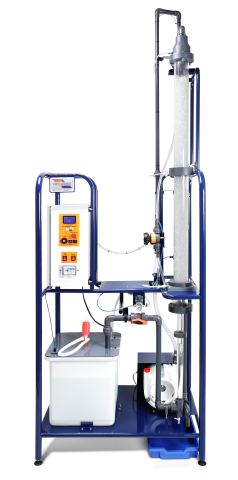
The Armfield Gas Absorption Column has been designed to demonstrate the principles of gas absorption, and to provide practical training in the operation of a gas absorption plant.
Key Features
- An apparatus for teaching the principles of the absorption of gas into liquid, using a packed column
- Column working length is 1.4m x 80mm diameter, split into two sections
- Two electronic pressure sensors measure the pressure drop across each half of the column
- An electronically controlled submersible pump provides a liquid flow of 1-10 l/min
- 60l feed tank
- Water flow can be used in either recycle or one-pass operation
- Column supplied with 10mm x 10mm Raschig rings as packing material, total volume 7l. Other sizes can be used
- Centrifugal fan provides air flow up to 160 l/min
- Two electronic temperature sensors measure the air and liquid temperatures
- Electronic measurement of CO2 concentration in the air streams, measurements can be taken at the column inlet and outlet
- Sensor values displayed on an alpha-numeric display on the control console
- Data logging as standard (requires PC, not supplied)

This small-scale benchtop tray dryer dries solids by passing a stream of hot air over trays of wet material, a method commonly used in industry. It is applicable to the unit operations laboratory and also to food technology education and research.
Key Features
- A compact desktop tray dryer suitable for laboratory use
- Computer control of temperature and air flow rate, with sophisticated data logging and analysis software
- Capacity: up to 2.1kg of wet material
- Flow rates 0.4 to 3.0 m/s over trays
- Temperatures up to 80°C at 0.4 m/s (less at higher flows)
- Integrated electronic weight measurement to determine drying rate
- Electronic measurement of temperature and humidity before and after the drying trays
- Electronic measurement of air flow
- Stainless steel construction
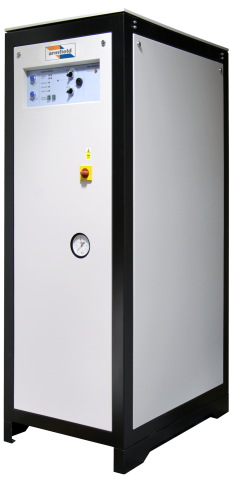
As many laboratories do not incorporate a centralised or reliable steam source, Armfield offer an advanced boiler providing a constant supply of steam. The compact unit requires only connection to water and electrical supplies for operation.
The UOP10 is an advanced boiler, providing a constant, steady supply of steam. The compact unit requires only connection to water and electrical supply for operation.
Key Features
- A floor-standing continuous steam generator
- Splash-proof electrical enclosure and switches
- Solid-state level control on feed water tank
- Easy and safe access for maintenance and inspection, with door isolator to the main electrical enclosure
- Manufactured in accordance with Module G of the European Pressure Equipment directive 97/23/EC
- A comprehensive instruction manual

The UOP20X is a modular system of evaporators for teaching chemical engineering. Using the various modules a wide range of configurations can be implemented: rising or falling film; single or double effect; forward, backward or parallel feed. The evaporators are fully
computer compatible, supplied with educational software including process control and data logging facility.
Key Features
- A laboratory evaporation system capable of being configured as rising or falling film, single or double effect
- Temperature controlled preheat stage
- Adjustable recirculation on each evaporation stage
- Manual control console
- Integral USB interface for computer data logging and control
- Contains vacuum pump, condenser and condensate vessel
- Options to operate from external steam supply, or integral electrically heated pressurised hot water circulator
Each evaporator column contains a stainless steel evaporation tube, within an insulated heated jacket for the hot water or steam. These are mounted on a back plate together with a glass cyclone to separate the concentrated product from the evaporated steam.
Also included on the back plate of each evaporation column is a recirculation pump and associated pipework, together with thermocouples to measure the temperatures of the product and heating fluid at a number of points. Two basic types of evaporation column are available:
UOP22 – Rising Film Evaporation Column
UOP23 – Falling Film Evaporation Column
A number of variants are defined for each column type, dependent on whether it is a first or second effect unit, and whether it is located in the first or the second position on the UOP20X service unit.
- UOP22-11 Rising Film Evaporation Column (1st effect, 1st position)
- UOP22-22 Rising Film Evaporation Column (2nd effect, 2nd position)
- UOP23-11 Falling Film Evaporation Column (1st effect, 1st position)
- UOP23-22 Falling Film Evaporation Column (2nd effect, 2nd position)
- UOP23-12 Falling Film Evaporation Column (1st effect, 2nd position)
Key Industries
- Biopharmaceutical and Biotechnology
- Chemical
- Cosmetics & Personal Care
- Education & Academics
- Food & Beverage
- Oil & Gas
- Pharmaceutical
- Powders & Pigments / Coating
Brand
The Armfield Industrial Division designs and manufactures research & development systems, primarily for the food, beverage, dairy, edible oil and pharmaceutical industries. Used by many of the world’s leading corporations, Armfield systems enable researchers and product developers to replicate full-scale industrial manufacturing processes on a miniature-scale in the laboratory.
